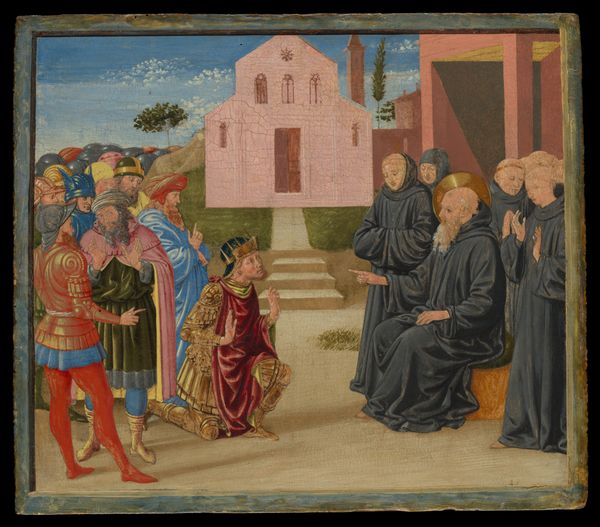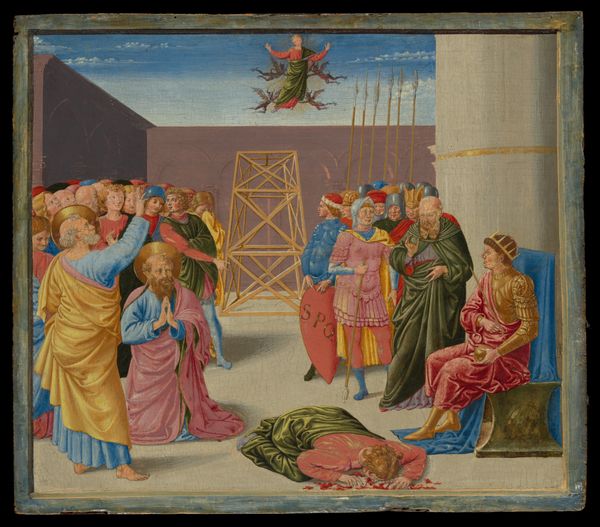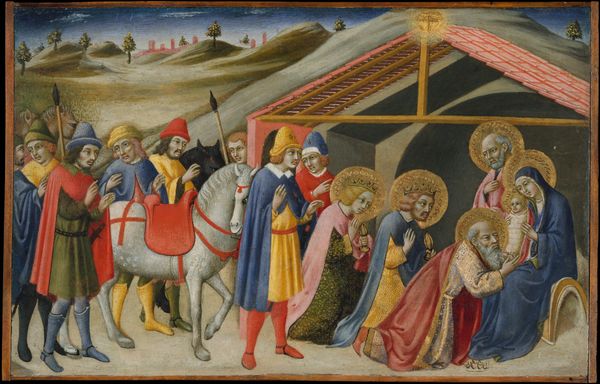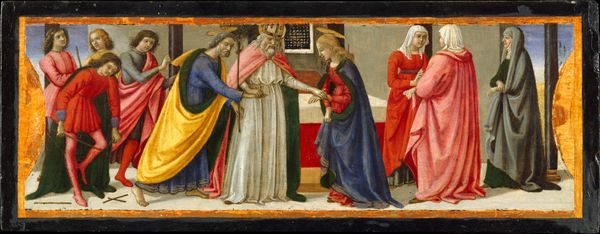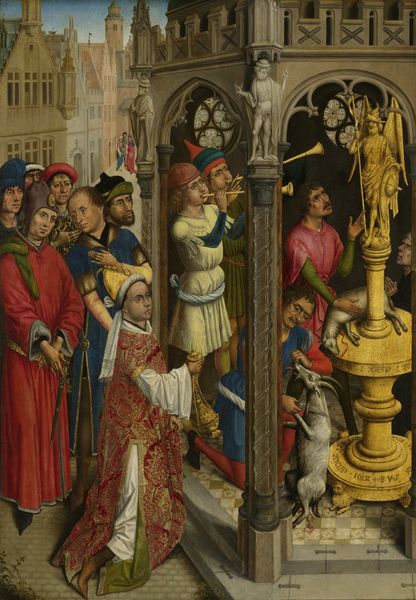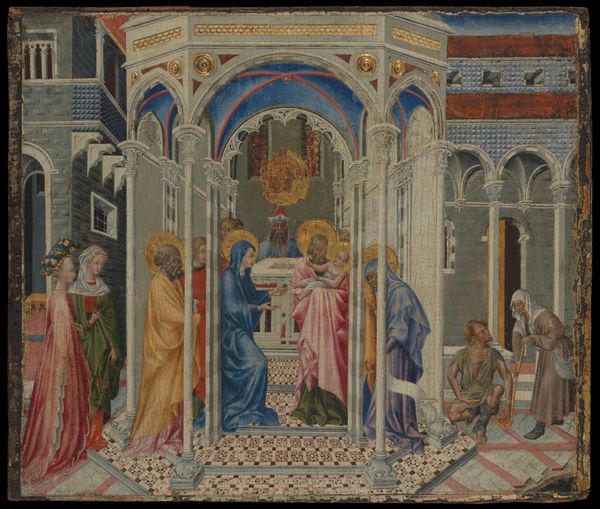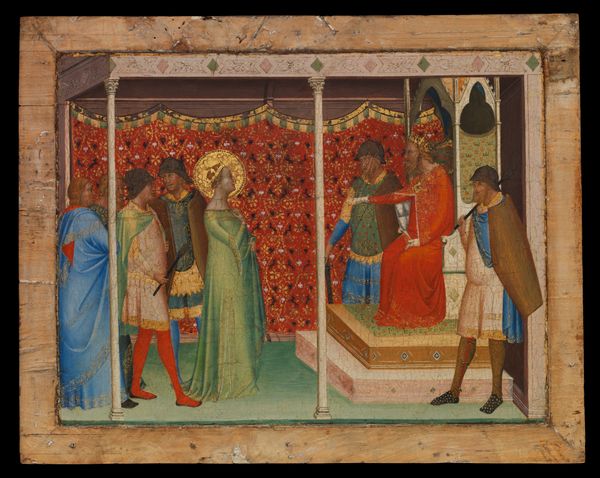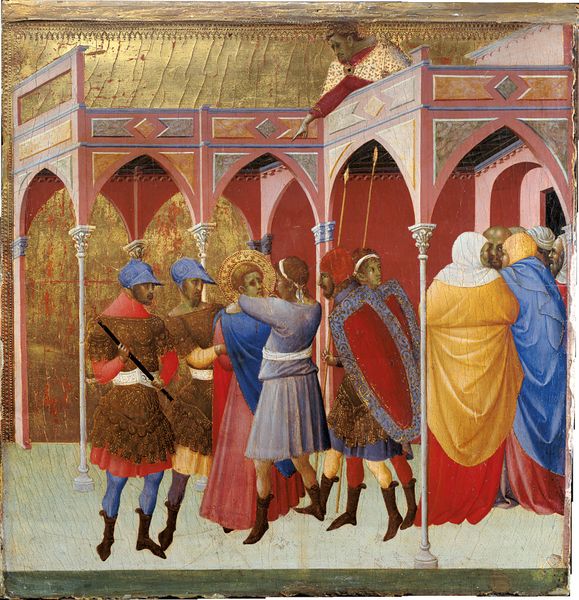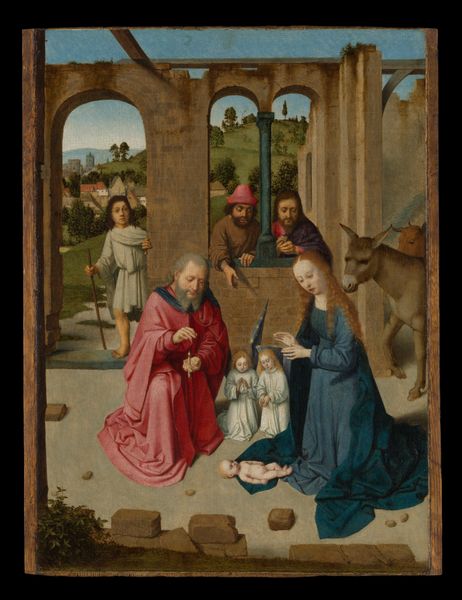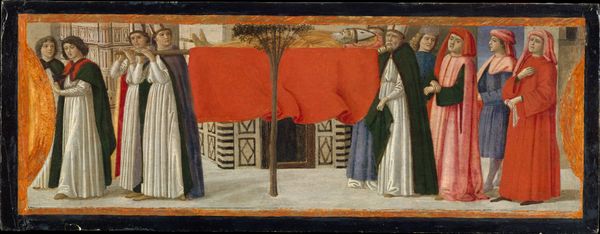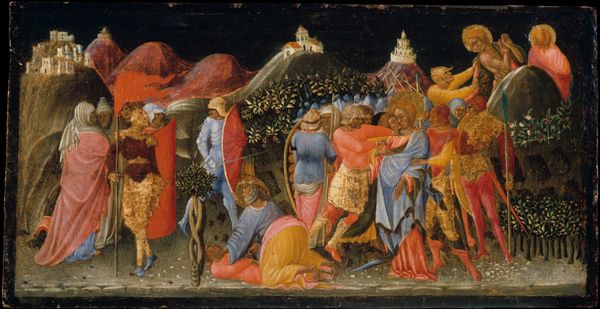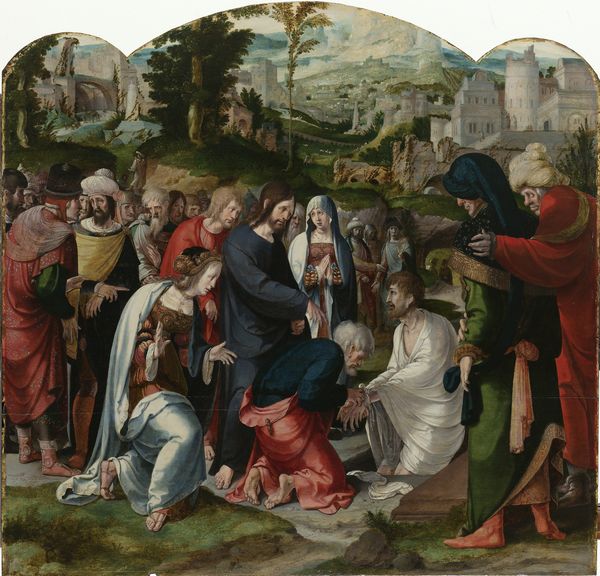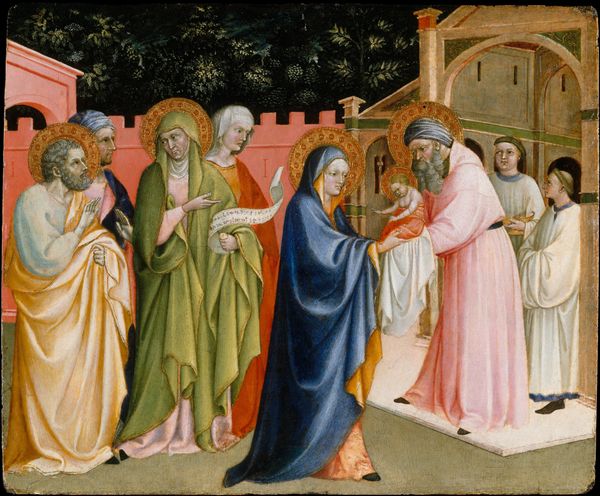
Saint Zenobius Resuscitating a Dead Child 1440 - 1497
0:00
0:00
tempera, painting
#
narrative-art
#
tempera
#
painting
#
death
#
folk art
#
figuration
#
child
#
naive art
#
men
#
italian-renaissance
#
early-renaissance
#
watercolor
Dimensions: 15 1/2 x 18 in. (39.4 x 45.7 cm)
Copyright: Public Domain
Editor: Here we have Benozzo Gozzoli’s tempera on wood painting, “Saint Zenobius Resuscitating a Dead Child,” dating back to between 1440 and 1497. It feels almost like a staged drama, with everyone gathered around this central event. What catches your eye in this piece, how do you interpret it? Curator: What strikes me is how this panel portrays power dynamics within 15th-century Florence, masked within a religious narrative. Gozzoli presents us with a miracle, but through what lens? Consider the context: the rising Medici influence, the Church’s stronghold on social order. This isn't just about faith; it’s a visual articulation of social control and who holds the authority to define life and death. Editor: So, it's more than just a religious scene, it's making a social commentary? Curator: Precisely! Who are the figures surrounding the event? How are they positioned, clothed? Notice how Saint Zenobius is centrally placed, bathed in light, almost legitimizing the political establishment. Consider, too, the dead child, representing vulnerability and powerlessness, wholly reliant on external intervention. How does Gozzoli use this visual vocabulary to reinforce the dominant ideologies of his time? Editor: It's interesting how you link the artistic representation with the social reality, revealing the less-visible mechanisms of power. I was so focused on the story of the miracle itself that I initially missed these nuances. Curator: That's the point of engaging with art, isn’t it? To excavate the layers, unearth the buried narratives. Gozzoli isn't merely depicting a scene; he's contributing to a larger conversation about faith, power, and social responsibility in a rapidly changing world. By questioning these depictions, we equip ourselves to confront similar structures in our present day. Editor: This really broadens my understanding and makes me consider art as a cultural artifact shaped by historical and social powers. Curator: Absolutely. Let's remember that art is never created in a vacuum. It is a mirror reflecting, but also refracting, the realities of its time.
Comments
No comments
Be the first to comment and join the conversation on the ultimate creative platform.
